
The Bangladesh Armed Forces are the military forces of the People's Republic of Bangladesh. They consist of the three uniformed military services: the Bangladesh Army, the Bangladesh Navy and the Bangladesh Air Force. The Armed Forces are under the jurisdiction of Ministry of Defence of the Government of Bangladesh, and are directly administered by the Armed Forces Division of the Prime Minister's Office. The President of Bangladesh serves as the Commander-in-Chief of the Bangladesh Armed Forces. Bangladesh has the third-largest defence budget in South Asia, The Bangladeshi military is the 37th strongest in the world and the third most powerful military force in South Asia. Border Guard Bangladesh and Bangladesh Coast Guard are under the jurisdiction of the Ministry of Home Affairs. during peacetime, but during wartime they fall under the command of Bangladesh Army and Bangladesh Navy respectively.
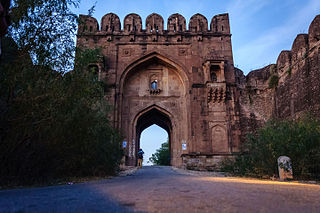
Jhelum District, is partially in Pothohar Plateau, and partially in Punjab Plain of the Punjab province of Pakistan. Jhelum is one of the oldest districts of Punjab. It was established on 23 March 1849. Jhelum is known for providing many soldiers to the British and later to the Pakistan armed forces due to which it is also known as 'city of soldiers' or 'land of martyrs and warriors'. The district of Jhelum stretches from the river Jhelum almost to the Indus. Salt is quarried at the Mayo mine in the Salt Range. There are two coal mines in the district from which the North-Western railway obtains parts of its supply. These are the only coal mines in Punjab province which are in working condition. The chief center of the salt trade is Pind Dadan Khan. The district is crossed by the main line of the North-Western railway and also traversed along the south by a branch line. It is located in the north of the Punjab province, Jhelum district is bordered by Sargodha and Mandi Bahauddin to its south, Khushab to its southwest, Jhelum River to its south and east, Gujrat to its east, Chakwal to its west, Mirpur to its northeast, and Rawalpindi to its north.
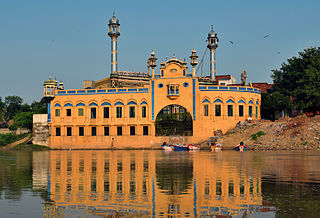
Jhelum is a city on the West Bank of the Jhelum River, which is located in the district of Jhelum in the North of Punjab, Pakistan. It is the 44th largest city of Pakistan by population. Jhelum is known for providing many soldiers to the British Army before independence, and later to the Pakistan armed forces, due to which it is also known as City of Soldiers or Land of Martyrs and Warriors.

Attock, formerly known as Campbellpur, is a city in Punjab, Pakistan, not far from the country's capital Islamabad. It is the headquarters of the Attock District and is 36th largest city in the Punjab and 61st largest city in the country, by population. The city was founded in 1908 several miles southeast of the historical city of Attock Khurd, which had been established by the Mughal Emperor Akbar in the 16th century, and was initially named in honour of Sir Colin Campbell.

The Rashtriya Indian Military College is a military school for boys situated in Doon Valley, Dehradun in India. The RIMC is a feeder institution for the National Defence Academy, Indian Naval Academy and subsequently the Indian Armed Forces. Rimcollians, the name by which alumni of the RIMC are usually denoted, have gone on to hold the highest ranks in the Army, Navy and the Air Force of India, Pakistan and Bangladesh.

The Punjab Province was a province of British India. Most of the Punjab region was annexed by the British East India Company on 29 March 1849; it was one of the last areas of the Indian subcontinent to fall under British control. In 1858, the Punjab, along with the rest of British India, came under the rule of the British Crown. It had a land area of 358,355 square kilometers.
Major General Akhtar Hussain MalikHJ SPk was a Pakistani senior military officer, and a widely decorated war hero of the Pakistan Army due to his leadership and command during the Indo-Pakistani War of 1965.

Military College Jhelum (MCJ) is a feeder college to the Pakistan Military Academy, Kakul, Pakistan. The college is one of three military colleges in Pakistan; the others being Military College Murree and Military College Sui.

Sikhism in Pakistan has an extensive heritage and history, although Sikhs form a small community in Pakistan today. Most Sikhs live in the province of Punjab, a part of the larger Punjab region where the religion originated in the Middle Ages, with some also residing in Peshawar in the Khyber-Pakhtunkhwa province. Nankana Sahib, the birthplace of Guru Nanak, the founder of Sikhism, is located in Pakistan's Punjab province. Moreover, the place where Guru Nanak died, the Gurudwara Kartarpur Sahib is also located in the same province.
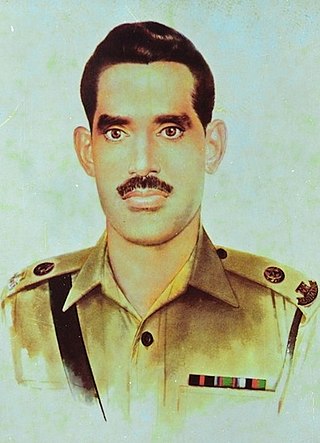
Major Muhammad AkramNH was a Pakistani military officer who was cited as the sixth recipient of Pakistan's highest military award, the Nishan-e-Haider, which he was awarded posthumously for his actions of valour in the Battle of Hilli during the Bangladesh Liberation War.
Pabna Cadet College, is a residential military high school, partly financed by the Bangladesh Army, located at Jalalpur, east of Pabna town, Bangladesh.
PAF College Sargodha is a Pakistan Air Force operated boarding school located in Sargodha, Punjab, Pakistan. It was established in 1953. Founded as a feeding school for Pakistan Air Force Academy, it is now a public school since 1990 funded by the Pakistan Air Force.

Rashtriya Military School, Chail is a residential school in Himachal Pradesh, India. The school's origins lie with the establishment of King George's Royal Indian Military School in Jullunder, Punjab, soon after World War I, with a donation of ₹250,000 from King George V’s patriotic fund. The foundation stone of this school was laid in the Jullunder Cantonment by King George V in February 1922, and the school started functioning in 1925. The school was moved to its present location in Chail, Himachal Pradesh, in 1960. Cadets are known as Georgians after the school's founding father.

Lieutenant General Jagjit Singh Arora, was an Indian Army General Officer who was the General Officer Commanding-in-Chief (GOC-in-C) Eastern Command during the Bangladesh Liberation War and the Indo-Pakistani War of 1971. He organised and led the ground forces campaign in the Eastern Front of the war, which led to an overwhelming defeat of the combined Pakistan Armed Forces in East-Pakistan that led to the creation of Bangladesh.
Kharian Cantonment, (Punjabi: کھاریاں ﮐﻴﻨٹ) or Kharian Cantt is one of the largest cantonments in Pakistan. It is located near Kharian city, in the Gujrat district of Punjab province.
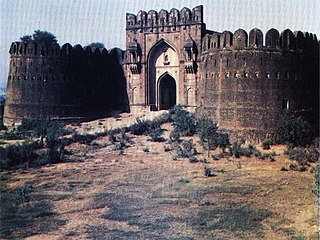
The recorded history of Jhelum, a district of modern-day Pakistan, covers thousands of years. Since its creation, Persian, Greek, Hindu, Buddhist, Muslim, Sikh, and British dominates the influences to present-day Pakistan.

Jhelum Cantonment, commonly abbreviated to Jhelum Cantt is a cantonment adjacent to the city of Jhelum, in Punjab province, Pakistan.
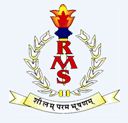
Rashtriya Military School Bangalore is a military boarding school in Bangalore, Karnataka, India. It was established on 1 August 1946 and is one of only five RMS of its kind in India; the other four being Chail Military School established in 1922, Ajmer Military School in 1930, Belgaum Military School in 1945, and Dholpur Military School in 1962. The cadets enrolled in these schools are known as Georgians, after their founder father King George VI.
Hugh CatchpoleCBE HI was a British educationist and philanthropist, mostly active in British India, and later India and Pakistan. He was a teacher and administrator in military colleges and schools such as Prince of Wales Royal Indian Military College, Pakistan Air Force School in Sargodha and Abbottabad Public School. He was the founder principal of Cadet College at Hasan Abdal. For 5 years of his life, he was in the Royal Army and for over 60 years, he was associated with schools in India and Pakistan.













